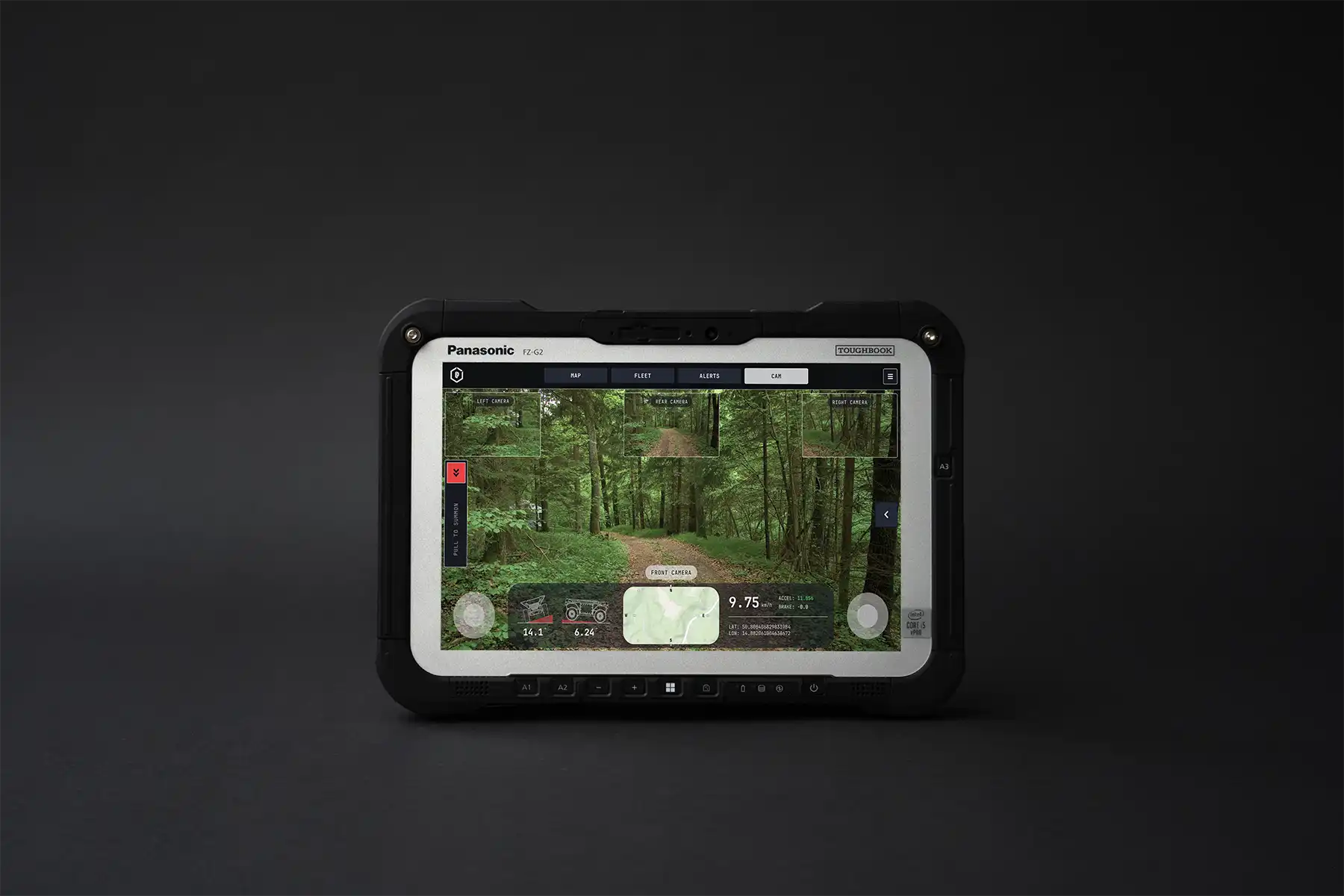Autonomous Navigation System
- Uses neural networks and machine learning for autonomous navigation in unknown environments.
- Automatically adjusts routes and responds to unexpected conditions without prior terrain data.
- Fuses data from cameras, LiDAR, and IMU, using SLAM for waypoint driving, obstacle avoidance, and path re-planning in GNSS-denied areas.
- Trained in virtual environments using digital twinning and real-world physics simulation to prepare for unpredictable scenarios.
- Ready for implementation in any unmanned system and vehicle equipped with default sensors.
Basic description
The Autonomous Navigation System empowers the HORNET UGV and other unmanned vehicles to navigate harsh environments using neural networks and machine learning for terrain segmentation and object recognition. By fusing sensor data from cameras, LiDAR, IMU, and SLAM technology, the system provides waypoint-based driving with real-time obstacle avoidance and route re-planning, even in GNSS-denied areas. It adjusts routes dynamically and reacts to unexpected situations without requiring prior terrain mapping, ensuring reliability in challenging conditions.
Model training takes place in a virtual environment, leveraging digital twin of the UGV alongside realistic simulations of physics and sensor data to prepare for unpredictable scenarios. A user-friendly Ground Control Station (GCS) enables reliable path planning and integration with other drone units, including UGVs and UAVs, offering a versatile solution for autonomous navigation and seamless coordination across multiple platforms.
LPP concurrently develops a similar autonomous system for UAVs, utilizing visual navigation and optical tracking to ensure jamming-proof operation.
Technical description
| Perception | Uses sensors such as cameras, LiDAR, and radar to identify and track obstacles in its path. |
| Navigation | Uses GPS, IMUs, and wheel encoders to determine its location, plan and execute its route to a given destination. |
| Obstacle Avoidance | Detects obstacles using sensors like LiDAR, radar, and adjusts its trajectory or speed to avoid them. |
Headquarters
- LPP s.r.o.
- Pod Hajkem 406/1a, 180 00 Prague
- Czech Republic
Production facility
- LPP s.r.o.
- Delnicka 475, 530 03 Pardubice
- Czech Republic
Documents
Headquarters
- LPP s.r.o.
- Pod Hajkem 406/1a, 180 00 Prague
- Czech Republic
Production facility
- LPP s.r.o.
- Delnicka 475, 530 03 Pardubice
- Czech Republic




